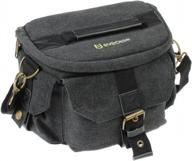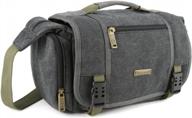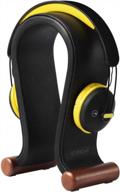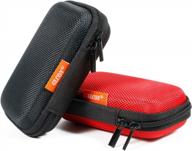
Review on Photo camera Nikon 1 V3 Body, black by Adam Sterlinski ᠌

The purchase brought only positive emotions.
To the age-old questions “why did I buy this particular mirrorless camera when I could afford a camera with an APS-C sensor” I simply answer: Nikon’s mirrorless camera was not assigned the “first” number because of the size of the matrix in 1 ". Nikon 1 V3 is the fastest camera in the world (! ) for 2022 (not counting, of course, stationary laboratory cameras). There are no analogues to this camera yet. Thanks to 276 points of contrast-phase focusing on the matrix, it is able to focus at a speed of 0.05 sec. ! I almost never I don’t press the shutter button halfway to aim, but immediately press it all the way and get the finished shot even in poor lighting conditions! In video, autofocus switches from object to object in a split second even in a dark cafe or at night under the light of lanterns. The capabilities of this camera really can produce a “wow effect. ” Plus, this camera has a very fast optics (Nikkor 32mm f / 1.2) and an unreal zoom lens with 810mm f/1.2 with a built-in stabilizer! Tew made of metal, including the camera itself, making it very weighty, but the tactile sensations of metal cannot be compared with the plastic cases of DSLRs. Recommendations: ● Always remember that the matrix of this camera is devoid of an optical smearing filter and any interference with the noise reduction will completely kill this advantage. I advise you to turn off all noise suppressors in the settings and forget about them as a nightmare. ● Without sharp fast lenses (not necessarily native ones) - this camera is just a toy. I strongly recommend to buy Nikkor 32mm F/1.2. ● Don't be afraid of noise at high ISOs, they can be easily removed in Lightroom.
- ● Finally decent ergonomics. ● Very powerful percent. Expeed 4A (resulting in image quality that is not inferior to cameras with an APS-C matrix [except for a little more noise by about 1 stop]); ● Lack of an optical AA filter on the matrix (giving a noticeable increase in image clarity, as if you were looking at a 100% increase in resize 18-Mpix from 22-Mpix, or applied sharpening. ); ● Rate of fire 10-60 photos per second with a buffer of 40 shots in RAW + JPEG; ● Maximum shutter speed - 1/16,000 sec. ; ● Full HD video recording 1920x1080p at 60 fps and quality up to 36 Mbps; ● Recording accelerated video at a frequency of 120 fps in HD-resolution and high-speed from 400 to 1200 fps with a resolution increased by 1.56, compared with younger models; ● Improved audio quality up to 1.5 Mbps. (instead of 128 kbps in younger models) + connector for an external microphone; ● Handheld multi-frame noise reduction without "stirring"; ● HDR with hands without "stirring"; ● Dynamic range expander; ● 360-degree hand-held panorama; ● Choice between mechanical and electronic shutter; ● MicroSDHC card inserted from the side (allows you to remove it without removing the camera from the tripod + compatibility with all mobile devices, which makes it possible to freely transfer high-quality photos and videos to tablets and iPhones even to random passers-by, while via Wi-Fi this can only be done through a special program, which, of course, no one has); ● Greater depth of field at the same aperture while maintaining lens aperture compared to a Full Frame sensor. (That is, it's like shooting at F / 8.0, but with aperture as at F / 2.8 - that is, a gain in increasing the depth of field by as much as 16 times! ). ● The diffraction limit is already reached at f/4.5, making it possible to capture landscape or macro with maximum sharpness handheld without a tripod. On Full Frame cameras, to get the same depth of field, you would have to clamp the aperture to F / 16 and use a tripod.
- ● Noise in the shadows even at base ISO 160 at 100% zoom without noise reduction turned on (yes, there are no fairy tales, alas! If you place 18.4 Mpix on a 13.2x8.8mm matrix, noise will be inevitable. ), but given the double headroom megapixels, this is not very annoying (remember 60-inch 4K ULTRA-HD TVs with exorbitant clarity. But they have only 8 Mpix, not to mention the usual Blu-ray, which has only 2 Mpix (! ). Especially since Noise grows non-linearly with increasing ISO value, so do 8-12 Mp resizes of your photos and you won't see noise at all. I would call ISO 160-800 (without noise reduction) and ISO 160-3200 (with noise reduction) as a range, but personally I prefer to stick to values of 160-400 units and optics with aperture of F / 1.2. ● From native optics, only 2 have really outstanding characteristics (with no less outstanding prices, of course). ● A bunch of stupid and expensive accessories for the camera. Only one additional handle (who could have thought of such a thing? ) with three buttons is worth something - 10,000! ))) By the way, the viewfinder costs the same amount. The only thing that is even more or less adequate is the Speedlight SB-N7 flash for 4500. and an IR remote control for 300. That's all.
New products
Comments (0)
Top products in 📷 Camera & Photo Accessories
Another interesting products

Canvas Camera Case Bag With Shoulder Strap For DSLR/SLR Cameras - Black, Medium Size By Evecase

30 Review

Canon Nikon Sony Panasonic FujiFilm Olympus Pentax DSLR Camera Bag, Evecase Large Vintage Canvas Messenger SLR Shoulder Strap Case - Gray

45 Review

Black Leather Headphone Stand: Universal Headset Holder For Gaming And More - SAMDI Product

42 Review

Protect Your Earbuds On-The-Go With Small And Portable EVA Case - Perfect For Airpods, USB Drives, Cables And More!

34 Review





